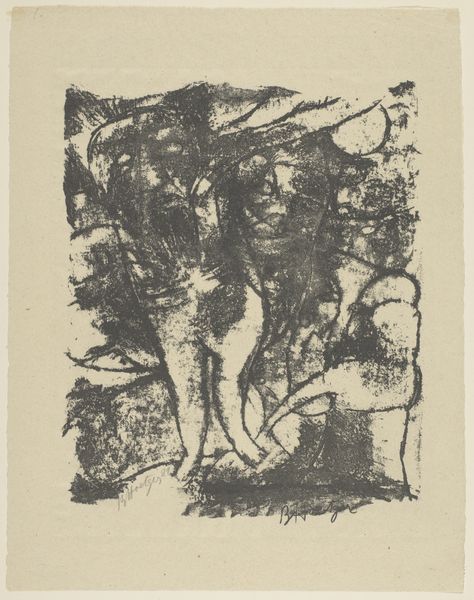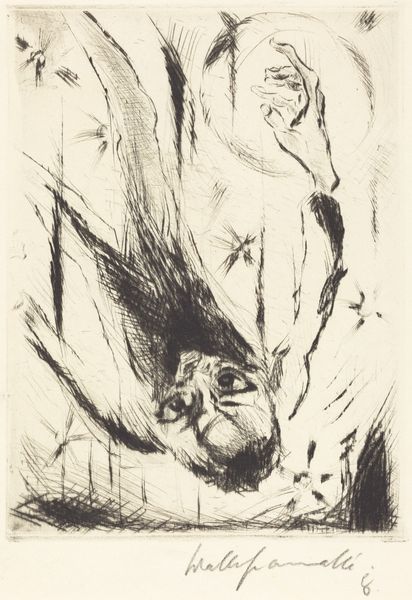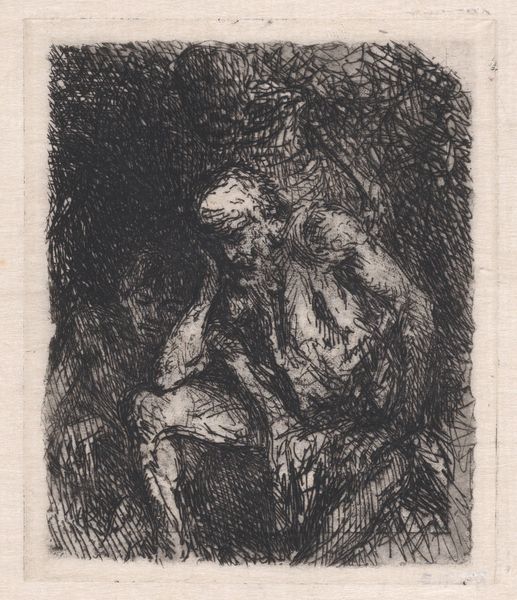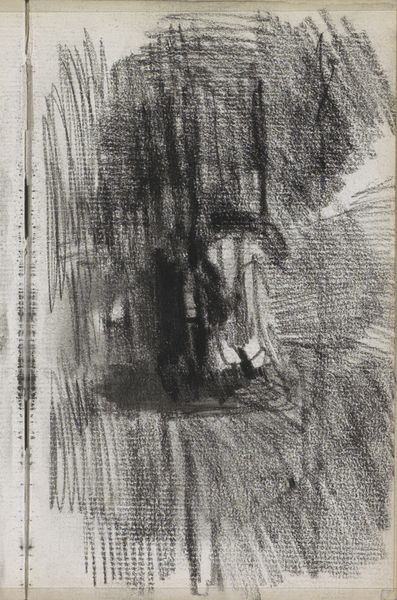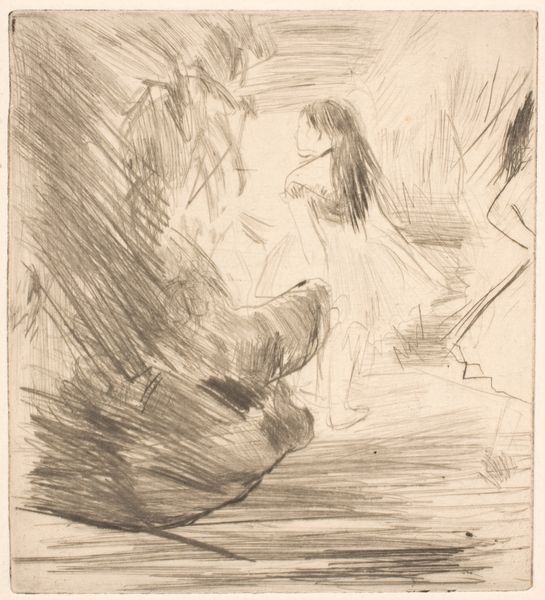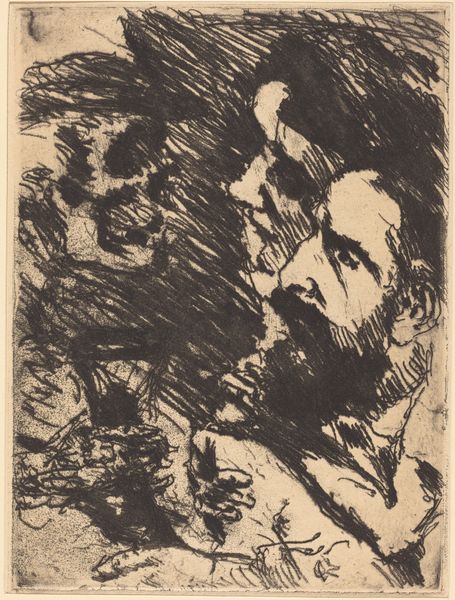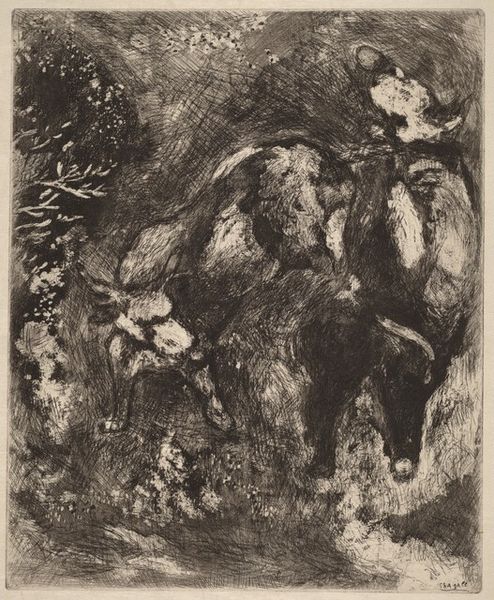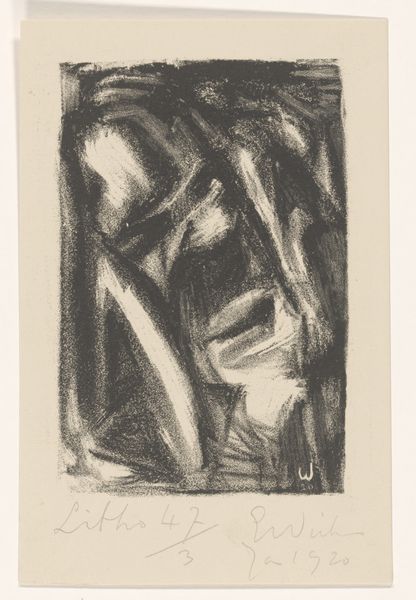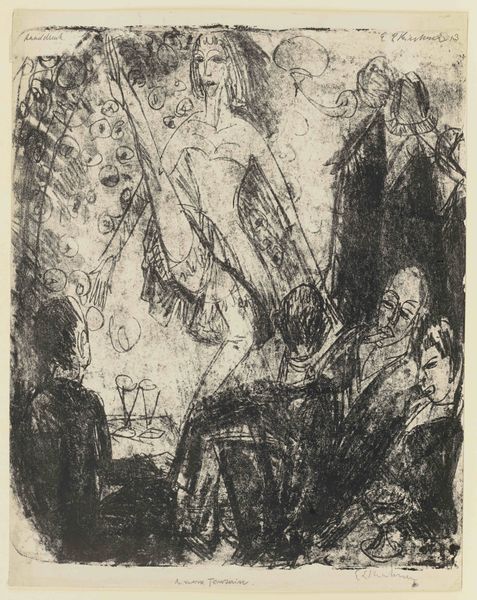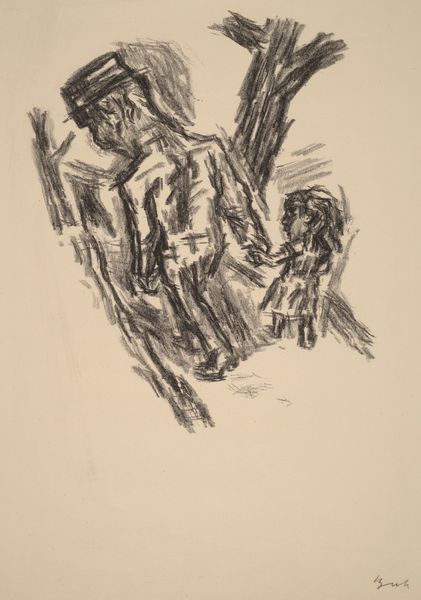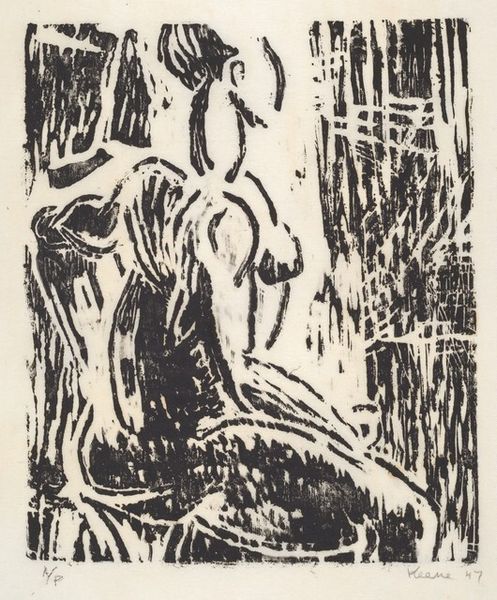
print, etching
#
portrait
# print
#
etching
#
vanitas
#
expressionism
Dimensions: plate: 23.9 x 17.7 cm (9 7/16 x 6 15/16 in.) sheet: 30.2 x 23.8 cm (11 7/8 x 9 3/8 in.)
Copyright: National Gallery of Art: CC0 1.0
Curator: Before us is "Tod und Weib," or "Death and the Woman," an etching by Lovis Corinth, likely completed between 1921 and 1922. Editor: Immediately striking—there’s a rawness in the textures, created through what appears to be a frenzy of etched lines. The tonal range is quite limited, but the contrast emphasizes a starkness, an almost brutal quality. Curator: Indeed. Corinth's work often reflects the anxieties of his time. Consider the post-World War I environment in Germany, with its economic hardship, social unrest, and disillusionment. The vanitas theme here becomes intensely personal, filtered through the lens of national trauma. Editor: I’m intrigued by how Corinth uses the etching technique. See how the chaotic lines converge and diverge? This creates a sense of instability, both in form and content. Is it correct to presume that his approach here serves as an apt metaphor for the fractured nature of the scene? Curator: Absolutely. Etching was well-suited to expressing the fractured spirit of the period. Consider how prevalent printmaking was as an accessible medium in disseminating social commentary; it became an inherently democratic way for art to take its place in a society seeking to democratize in itself. Editor: The formal arrangement almost obscures legibility. At first glance, identifying discrete figures is challenging. Is Corinth interested in deconstructing forms? Curator: Corinth uses distortion as a form of psychological expression, particularly following his stroke. We see it vividly in his later self-portraits. The obscuring of forms speaks directly to the confusion that comes with his changing perception. Editor: Looking closer, I think I understand how the image is built—a dance between representation and dissolution. I am not familiar enough with its reception to grasp its social relevance upon its release. Curator: Initially exhibited among collections grappling with themes of loss and societal breakdown, Corinth’s etching helped articulate an unspoken sentiment— a shared confrontation with mortality intensified by the era's cataclysms. It spoke truth to the realities facing Weimar Germany. Editor: So, beyond the individual turmoil Corinth might have been processing, "Death and the Woman" entered the broader social arena, adding its voice to collective introspection. Curator: Precisely. It's a powerful demonstration of how personal artistic expression can become a potent societal commentary, shaping dialogues that extend far beyond studio walls. Editor: I have to admit, my purely formal approach felt almost inadequate when juxtaposed with that backdrop! Thanks for the insightful addition.
Comments
No comments
Be the first to comment and join the conversation on the ultimate creative platform.

